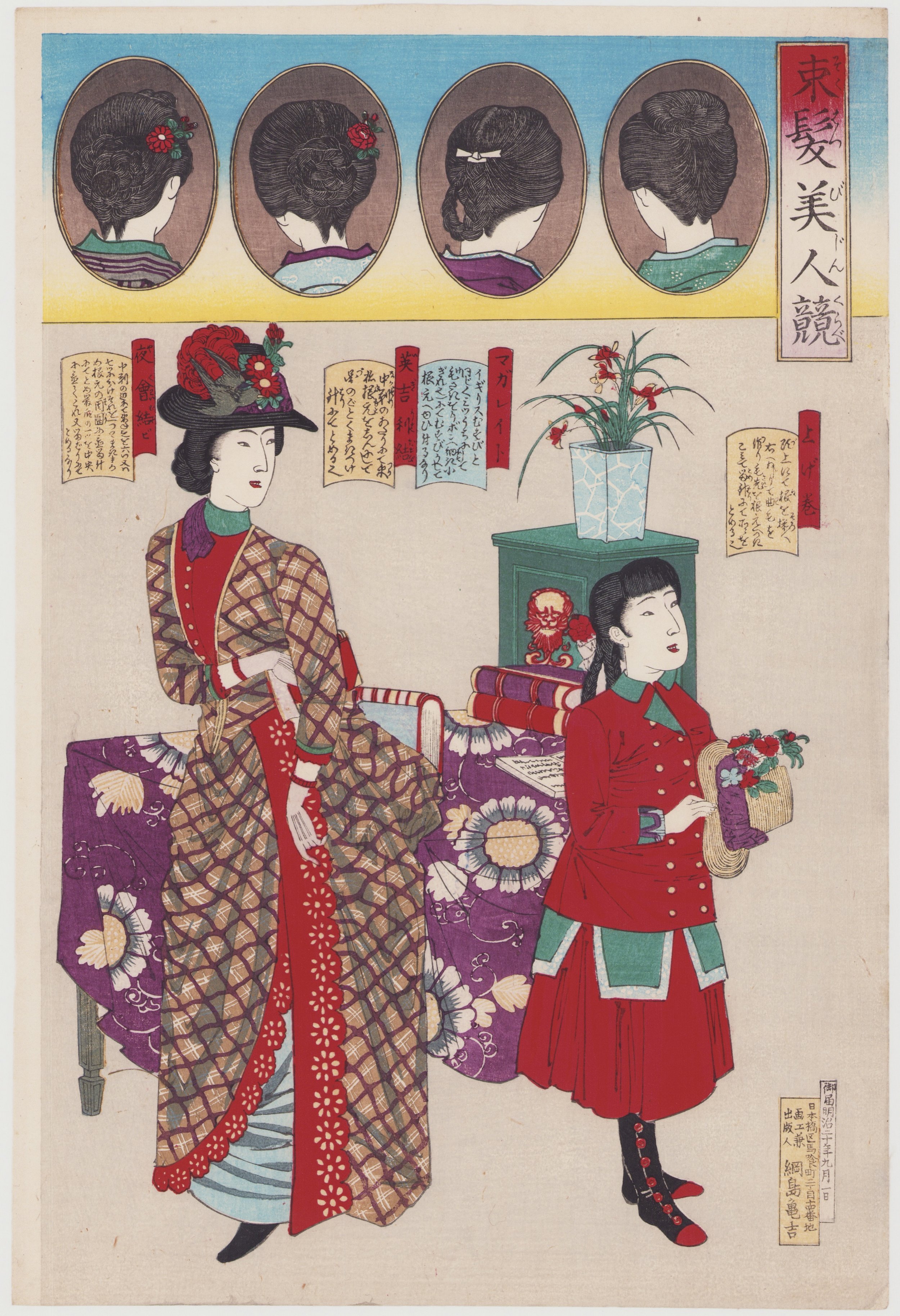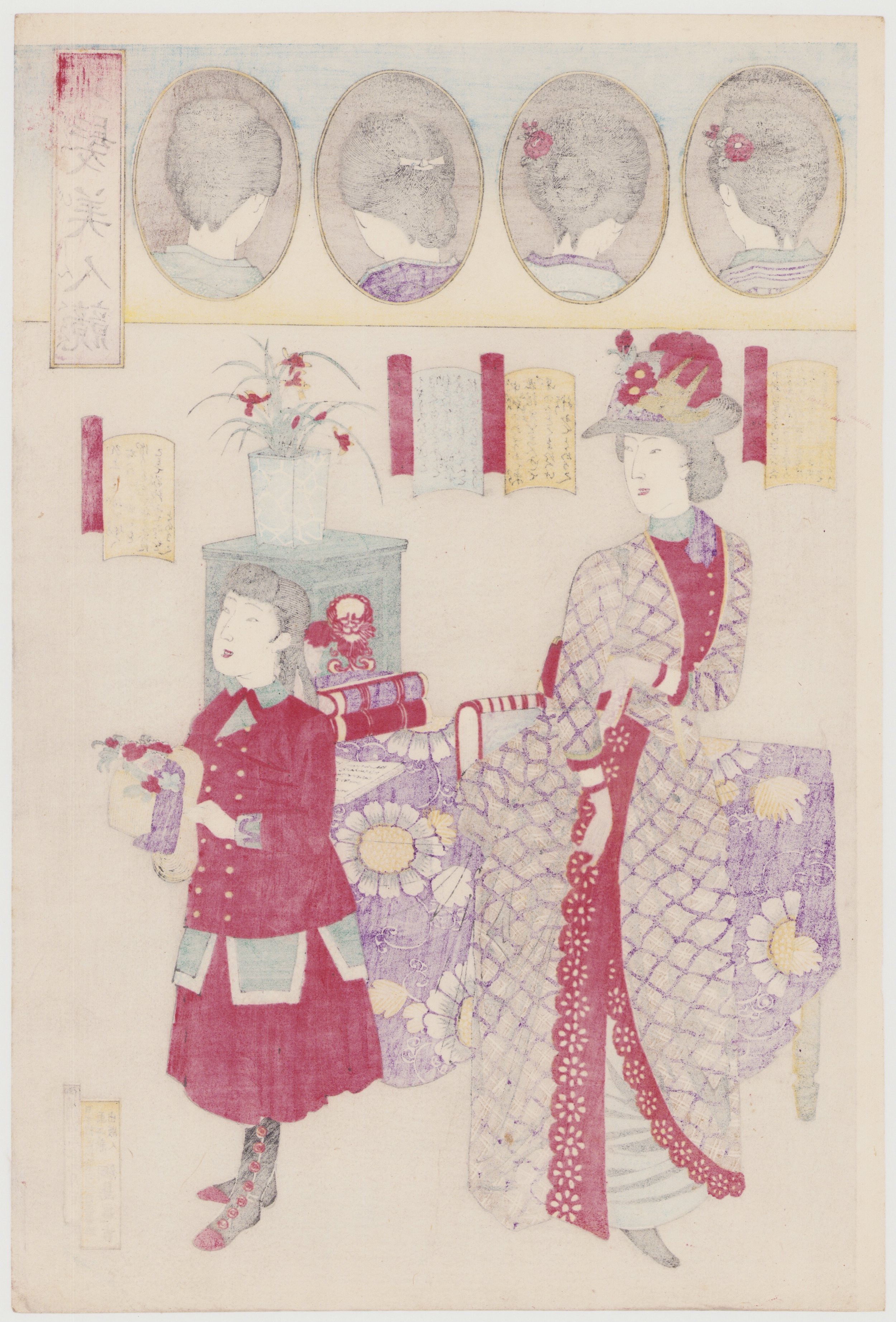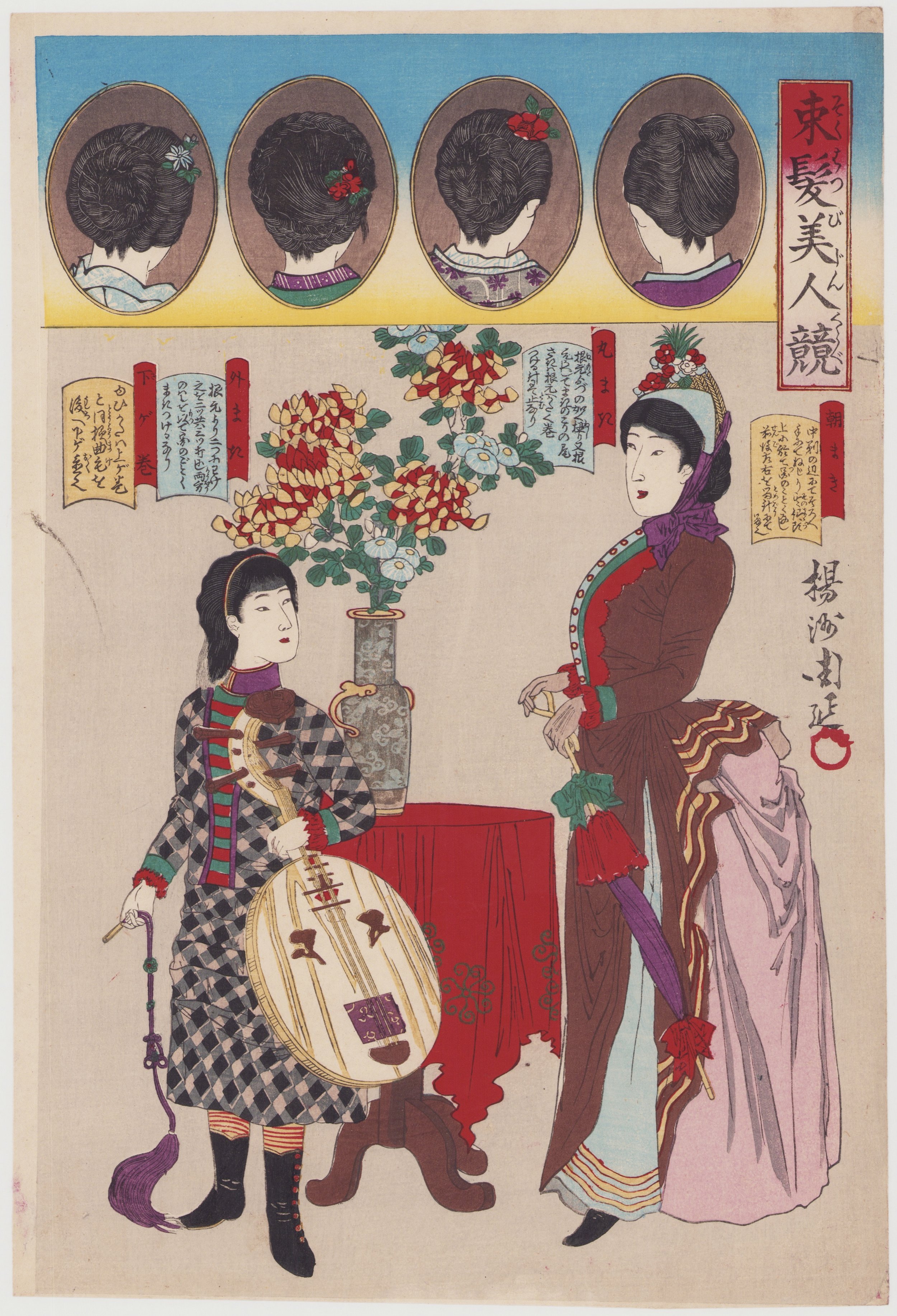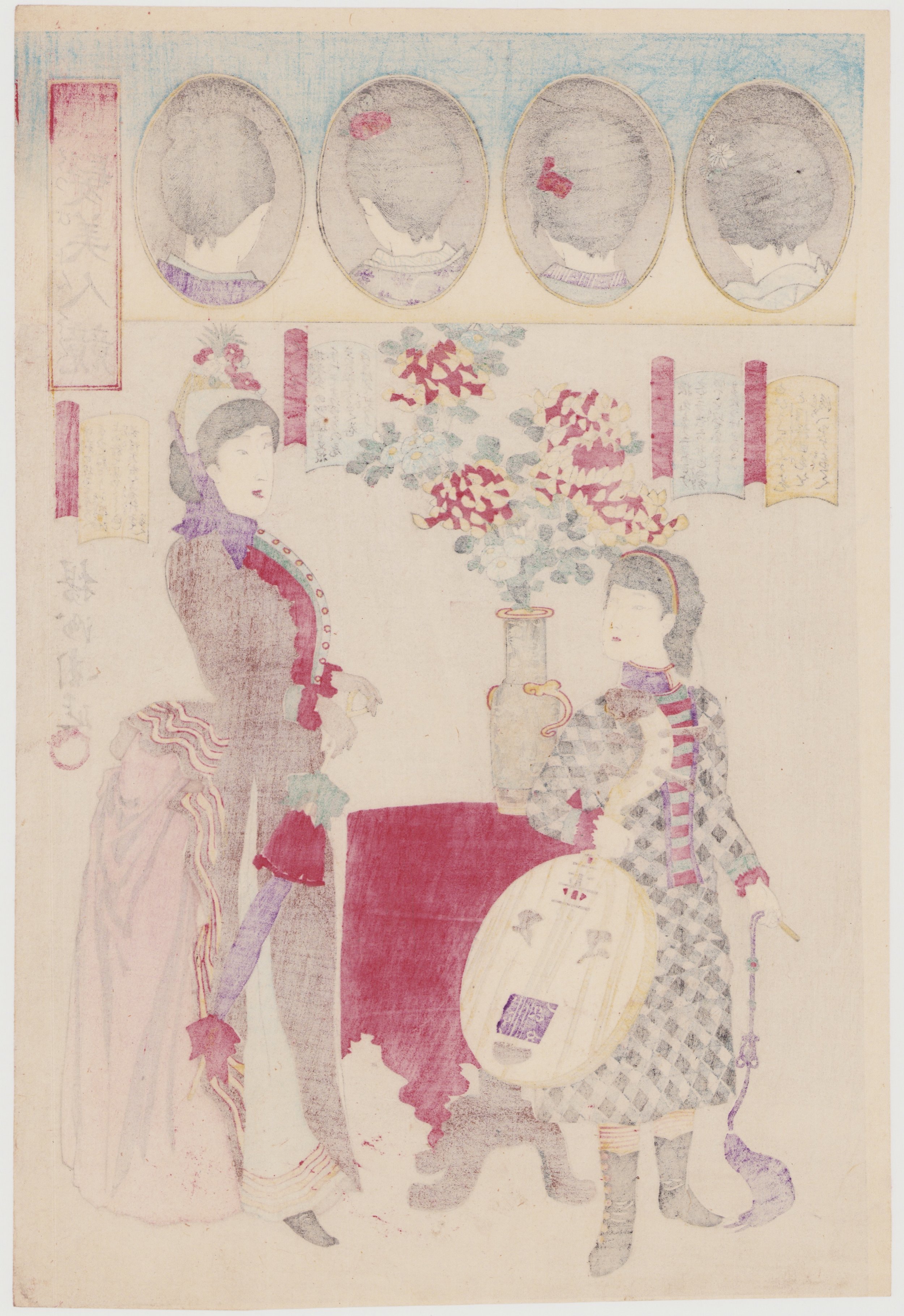Toyohara Chikanobu (1838–1912)
Toyohara Chikanobu was born in 1838 in Edo and, obviously possessing talent, studied the Kanō school of painting. But his love was Ukiyoe. He studied with Kuniyoshi and, upon the master’s death, with Kunichika.
A samurai like his father, Chikanobu fought on the side of the Shogan against the Emperor Meiji as Japan moved unsteadily towards modernity, and was arrested when the Emperor’s forces triumphed. But by the 1880s he was free to pursue his art.
His work ranged from Japanese mythology to battles to women's fashions. A great many were triptychs, and some were quite garish in their choice of colors, as was the style in the waning days of Ukiyoe. His designs illustrating women’s fashion were especially interesting because they depicted the radical shift from traditional to Western clothing during the Meiji restoration and the changes in coiffures and make-up styles that accompanied them. When he drew women in traditional dress, it was a nod to the recent past, with a healthy dose of nostalgia. He died in 1912.








